Monroe County starts 2021 with another death due to COVID-19
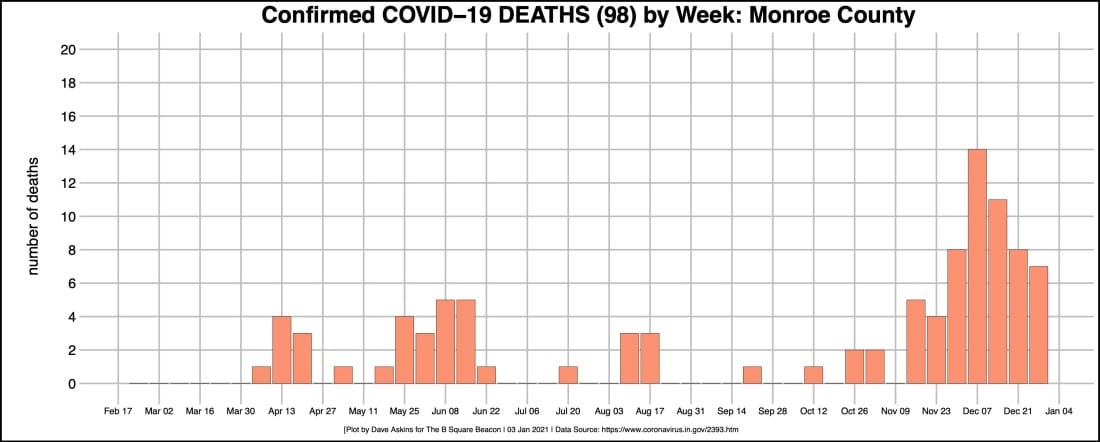

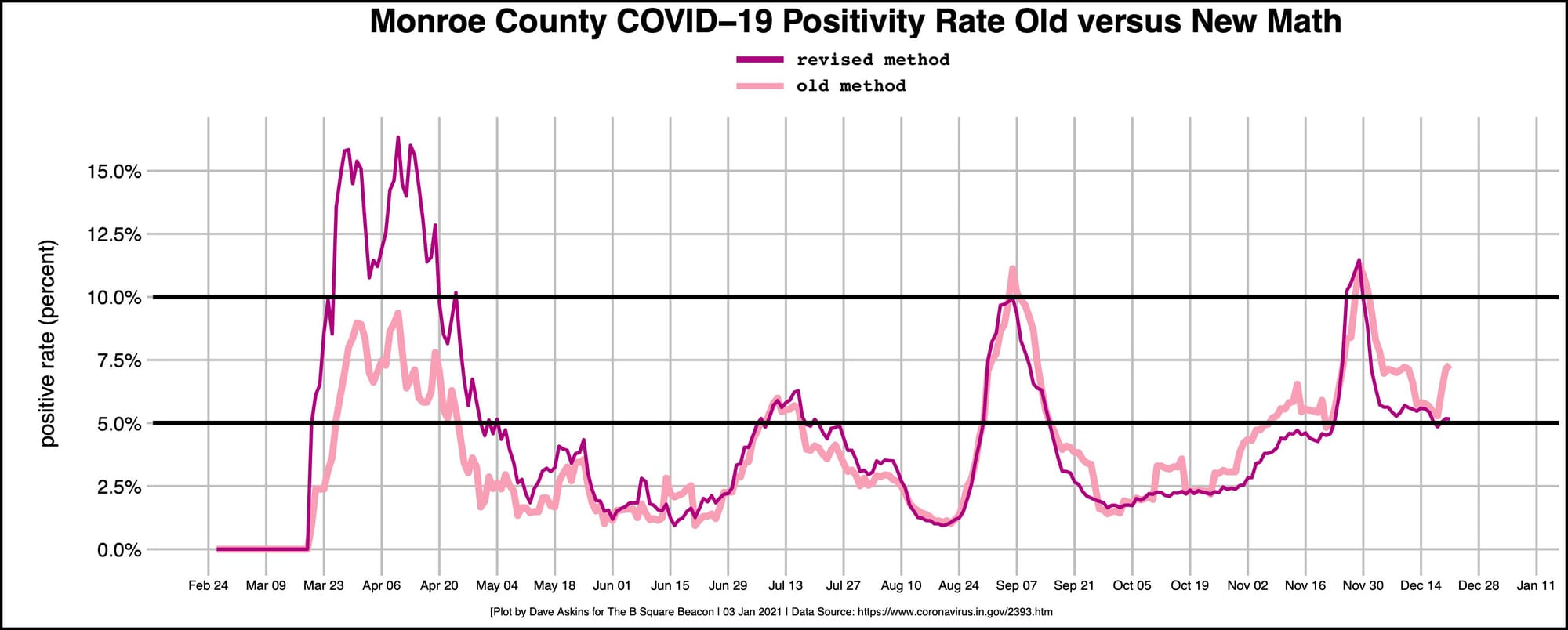
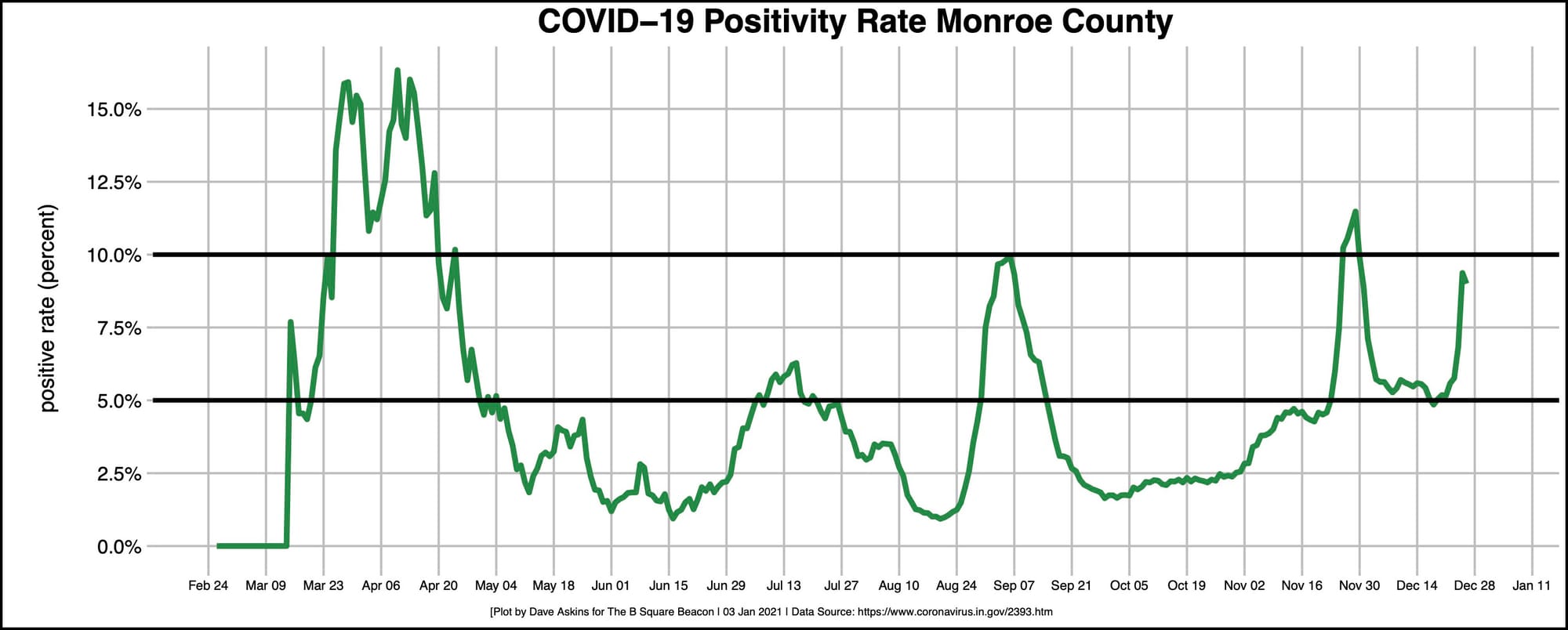
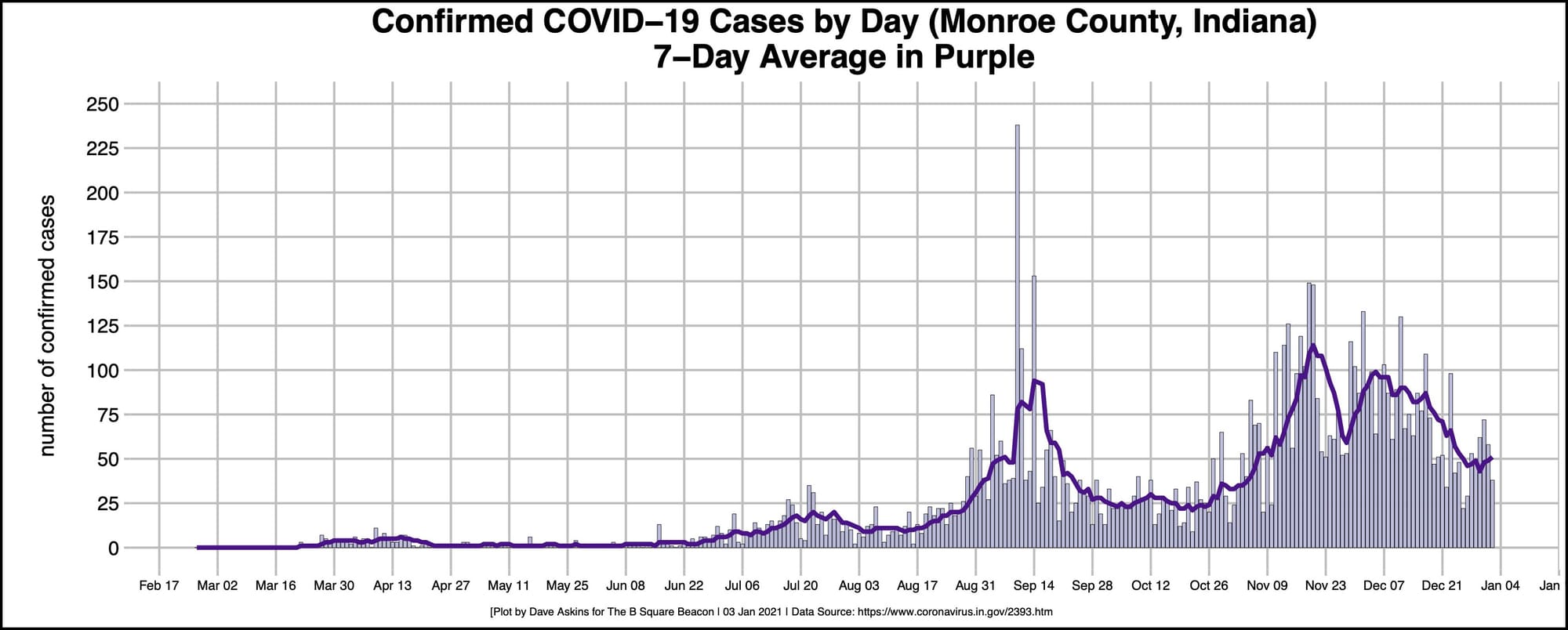
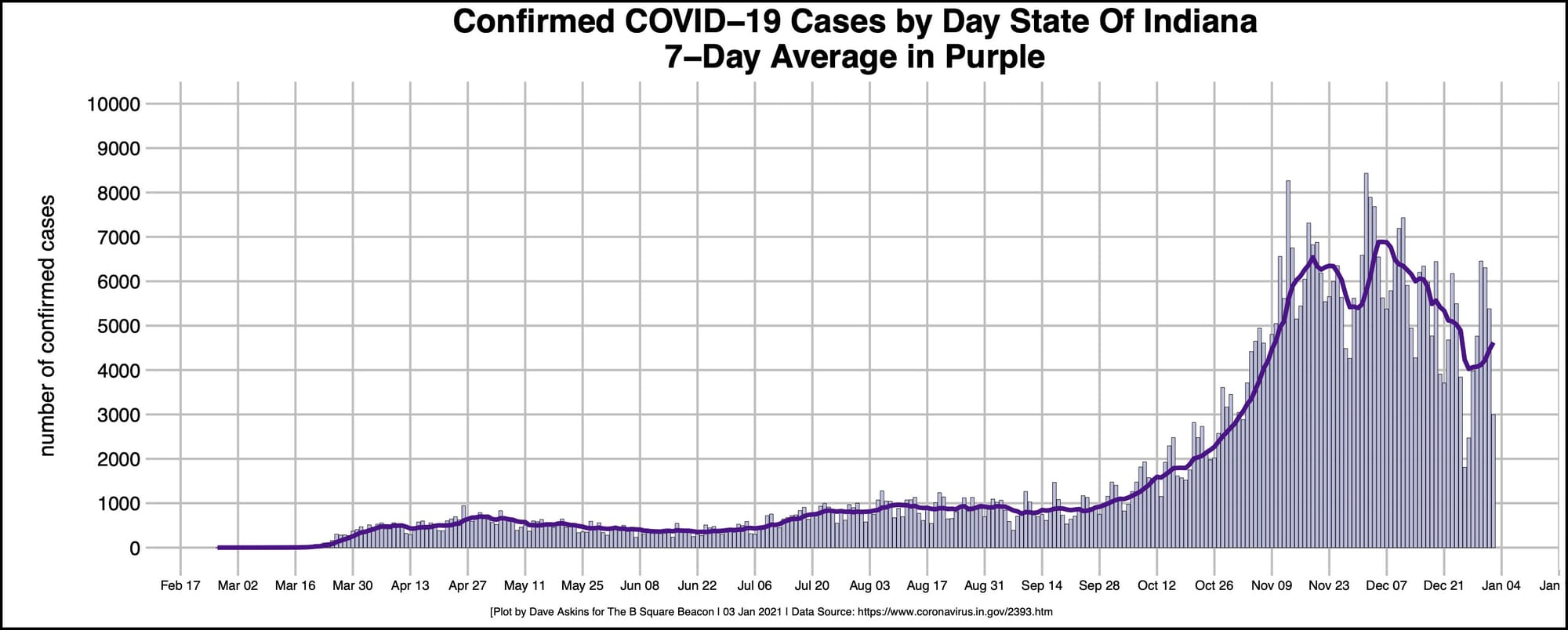
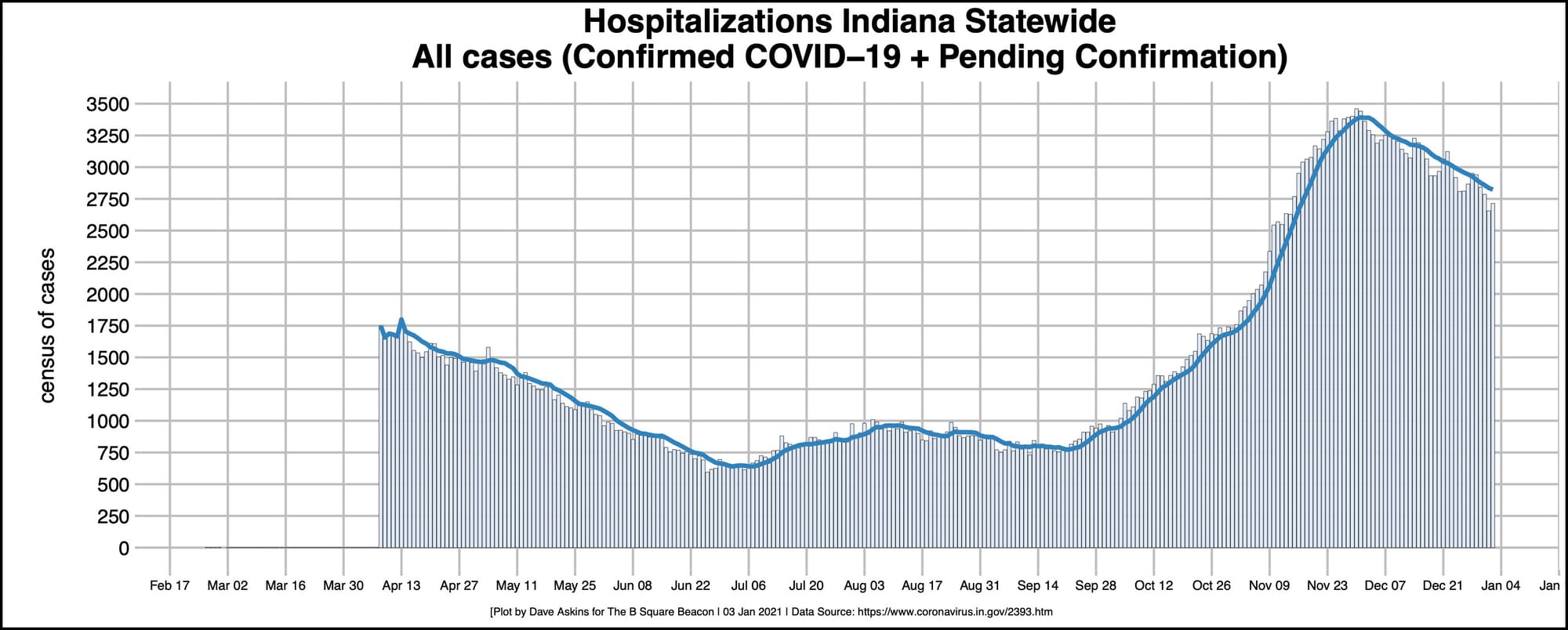
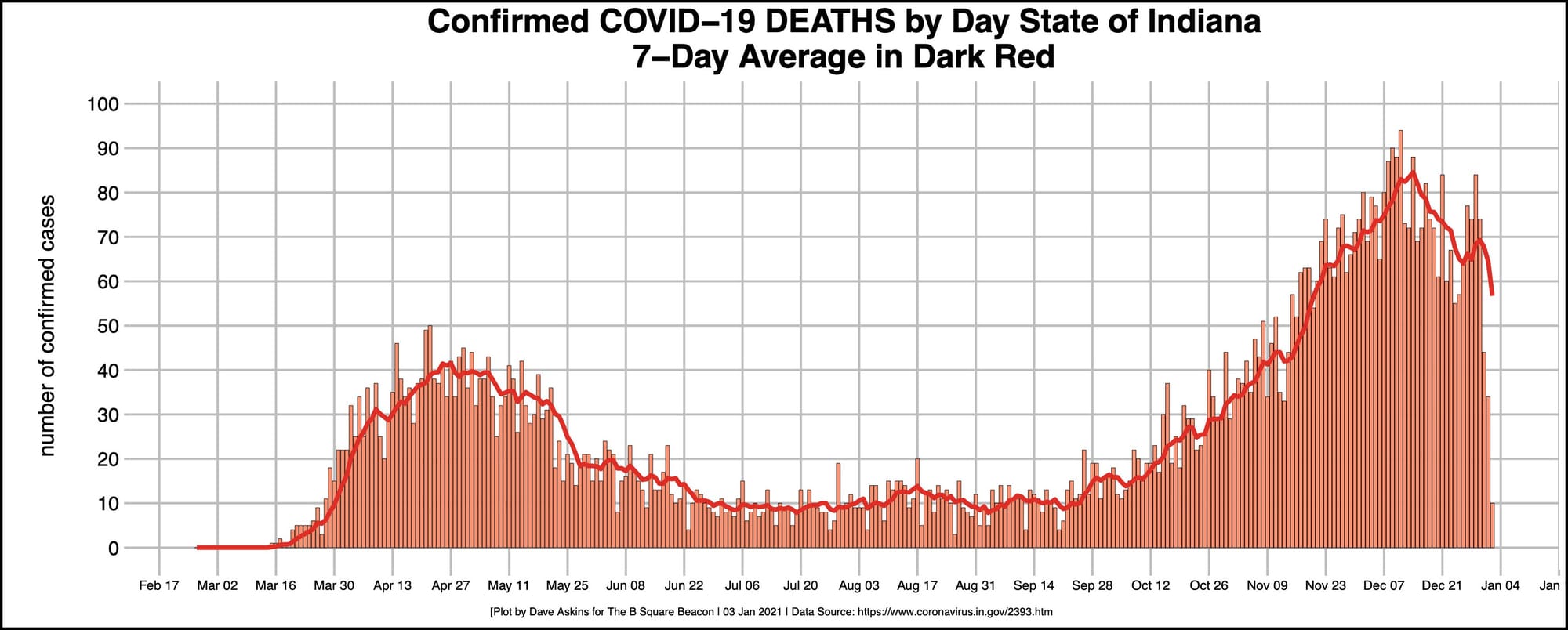
On Sunday, Indiana’s department of health dashboard noon update recorded one additional death in Monroe County due to the COVID-19 pandemic virus. It came on the first day of the year.
That brings Monroe County’s total COVID-19 deaths since the start of the pandemic to 98. The first one was recorded on April 11.
About half of Monroe County deaths, 46 of them, have been recorded since the start of December of last year.
The current trend for deaths in Monroe County looks like it is dropping from its peak of 14 cases, which came during the week of Dec. 7, to half that for the most recent full week.
Statewide, the rolling 7-day average daily number of deaths is also showing a downward trend, from a peak of around 85 in mid-December, to about 70 by the end of the year.
Hospitalization trends for the virus are also starting to show a downward trend, but statewide the numbers are now still three times as high as they were during the August surge.
Statewide confirmed case counts and countywide counts show a similar downward trend, but they’re still sitting at high levels compared to previous stages of the pandemic.
Statewide, the rolling 7-day average confirmed case count is currently around 4,600 cases, which is 4.6 times the roughly 1,000 cases confirmed every day from mid-July through September.
In Monroe County, the rolling 7-day average confirmed case count is currently around 50. That’s the lowest it has been since early November. Monroe County made it through October with confirmed case numbers every day of that month of around 25.
The positivity rate for Monroe County has jumped in the fourth week of December, to about 9 percent, after going through the first three weeks of the month at about 5 percent. That’s likely due to the holiday break drop in mitigation testing that Indiana University has been doing.
Mitigation testing, compared to tests that are done on people who have symptoms or think they might have been exposed, generally will show a lower positivity rate. So the large amount of mitigation testing done by IU is thought to contribute to a lower positivity rate for Monroe County compared to other parts of the state. When mitigation testing has ebbed during holiday breaks, the county’s positivity rate has increased.
The weekday timing of IU’s mitigation testing has also had an effect on the computation of Monroe County’s positivity rate.
Because the mitigation testing has been done on weekdays, but not weekends, weekend positivity numbers have been relatively high, but based on relatively few numbers of tests. That means taking the average of daily rates to compute a 7-day rolling average has tended to skew Monroe County’s average upward, compared to a method that takes the total number of positives and divides by the total tests done for the 7-day period.
On Dec. 30, Indiana’s state department of health started using that new method to calculate the rolling 7-day average for positivity rate: dividing total positive cases by the total tests for the 7-day period. Comparing plots for the two methods in Monroe County shows that the basic trends have been similar. But the new method shows a smoother pattern, one that has generally trended lower than the previous one, since IU students returned to class and the university started mitigation testing.
In the early months of the pandemic, the new method gives higher results than the old method. In the early months, the trend appears to be that days when fewer people were tested also showed percentage-wise fewer people testing positive. So for that period, taking an average of daily rates gave lower rolling 7-day averages than with the new method of calculation. That was a time when fewer tests were done and the prevailing advice was not to get tested unless there was some reason to think there’d been an infection.





Comments ()